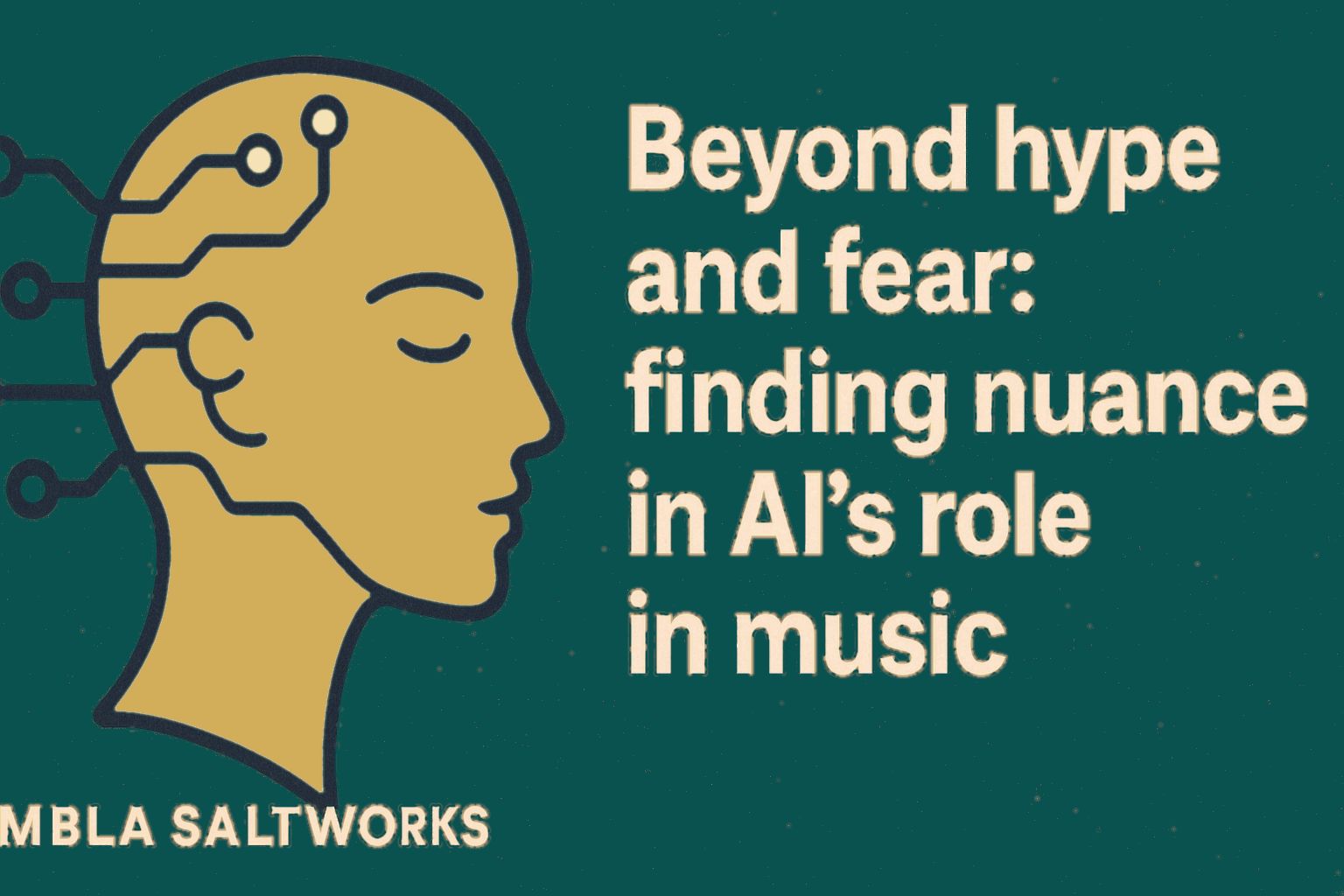- Songs from the sea
- Posts
- Opening the Dialogue on AI in Music
Opening the Dialogue on AI in Music

As a songwriter and producer working under the name Kembla Saltworks, I’ve been exploring the creative possibilities of tools like Suno AI. These systems are powerful, sometimes controversial, and still very new. My aim here isn’t to argue for or against them outright, but to frame a starting point for dialogue—one that moves beyond knee-jerk reactions and toward a deeper philosophical conversation about creativity, ownership, and authenticity.
AI as a Spectrum of Use
AI in music isn’t monolithic. At one end of the spectrum, it can generate a song from a simple prompt—“write a song about puppies”—with very little human input. At the other, it can act like a sensitive instrument, responding to the rhythms, melodies, and emotions that a songwriter brings. I’ve found that when I feed Suno a rough guitar-and-vocal demo, it doesn’t just polish the sound—it seems to capture and amplify the groove, phrasing, and feeling I put in. The more the human shapes the process, the more authentic the result feels.
Culture has always thrived on borrowing, remixing, and transformation. Our nervous systems “scrape” the world constantly: we hear songs, voices, phrases, and rhythms, and they become part of our creative vocabulary. In that sense, AI isn’t doing something alien—it’s participating in the same cycle of influence and reinvention that has always defined art.
That said, plagiarism has never been acceptable. There’s a difference between influence and copying, and between transformation and theft. AI forces us to rethink where those lines lie.
The Problem of Scale
Here’s where AI feels different. A painter might study one master—Picasso learning from Rembrandt. That kind of borrowing is small-scale and sustainable. But AI models can ingest millions of works and recombine them at industrial scale. What’s natural at the human scale can become extractive or destabilizing at the machine scale. This is a variation on the problem of the commons: a single act may have little effect, but multiplied at scale, it risks degrading the shared cultural resource we all rely on.
Artists, Access, and Fairness
It’s also worth remembering that artists were being ripped off long before AI. Gatekeeping, unfair contracts, and exploitative middlemen are part of the music industry’s history. In that sense, AI could also level the field—empowering songwriters and producers without access to expensive vocalists or elite networks to realize their visions. The challenge is to do this in ways that ensure fairness: preventing plagiarism, recognizing influence, and compensating artists whose work contributes to the commons.
The Open Questions
For me, the debate isn’t about banning or embracing AI wholesale. It’s about asking better questions:
How do we draw the line between influence and appropriation?
What systems of consent and compensation can keep the cultural commons healthy?
How can these tools be used to amplify human creativity rather than replace it?
The legal frameworks are still in flux, and so are our cultural norms. This is the beginning of a journey, not the end. My hope is that by holding space for nuance, we can resist both utopian hype and dystopian fear, and instead engage in the deeper philosophical work of asking: what does creativity mean in an age of intelligent tools?
Ken Davis — Kembla Saltworks